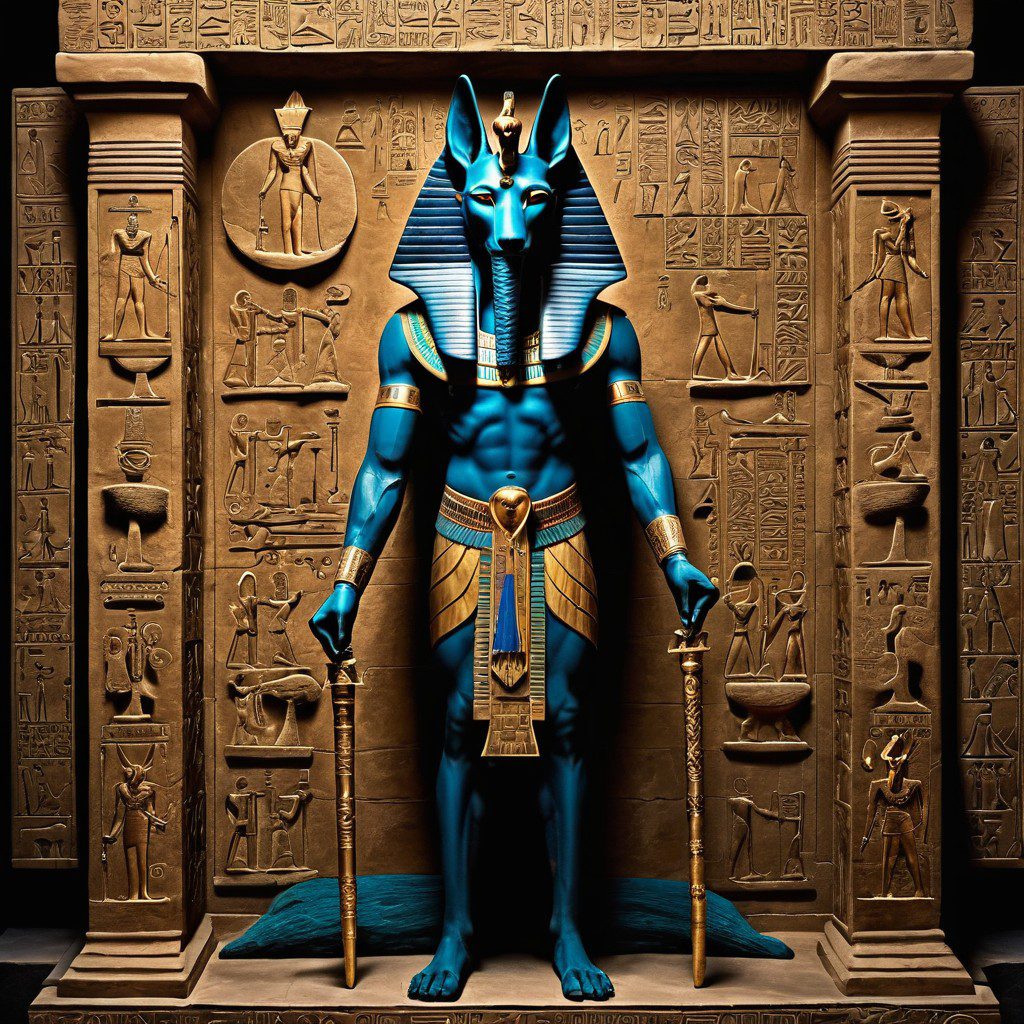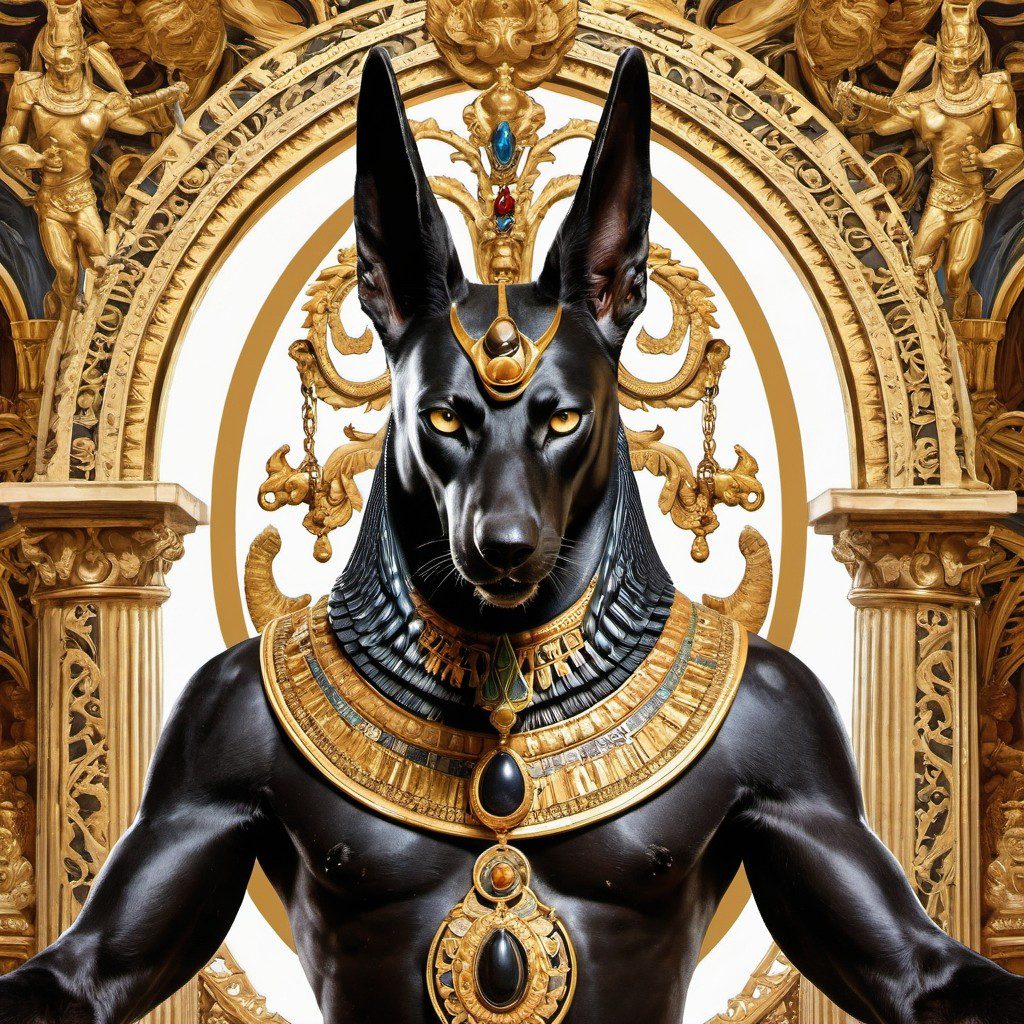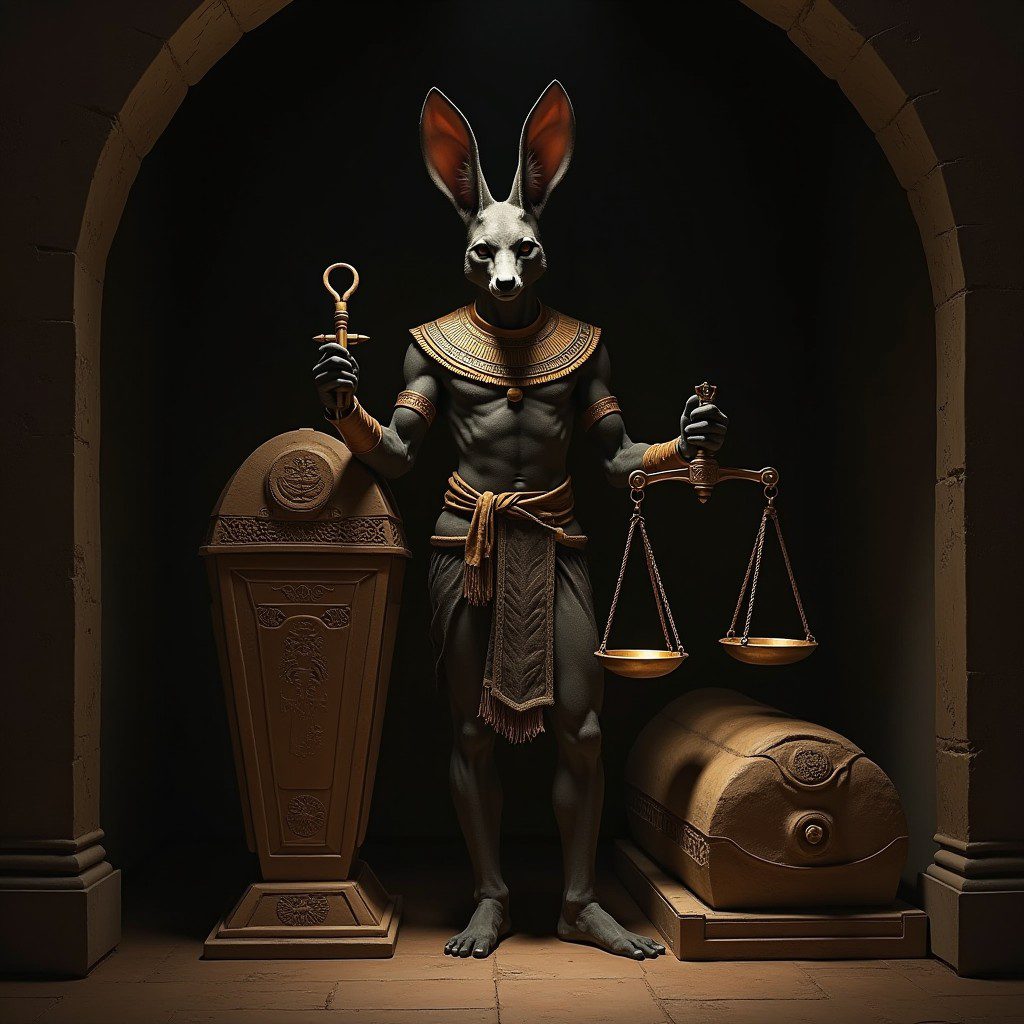Anubis: The Jackal-Headed God of Death and Mummification in Ancient Egypt

Among the many powerful deities of ancient Egypt, Anubis stands out as one of the most iconic and mysterious. With his jackal head and humanoid body, Anubis is instantly recognizable and deeply connected to the ancient Egyptians’ complex beliefs about death, the afterlife, and the preservation of the dead. As the god of mummification and guide of souls, Anubis played a critical role in ensuring that the dead safely reached the afterlife, where their fate would be judged.
Though his origins are ancient, Anubis remains a symbol of death, protection, and the mysteries of the underworld, captivating imaginations even thousands of years after his worship first began.
The Origins of Anubis
Anubis, known in Egyptian as Inpu or Anpu, was one of the oldest gods in the Egyptian pantheon, with his worship dating back to the Old Kingdom (around 2686–2181 BCE). His association with death and funerary practices is believed to have evolved from the Egyptians’ observation of wild jackals that roamed the desert outskirts where cemeteries were located. Because these jackals often scavenged near burial sites, the Egyptians associated them with the world of the dead.
As a result, Anubis came to be depicted as a jackal-headed god or as a black jackal, the color symbolizing the dark, fertile soil of the Nile and the regenerative aspects of the afterlife. His black hue was not meant to represent death in a morbid sense but rather the promise of rebirth and eternal life that followed death.
The Role of Anubis: Protector and Guide

Anubis’s primary role in Egyptian mythology was as the god of mummification and the guardian of tombs. He was believed to oversee the embalming process, ensuring that the dead were properly preserved so they could journey to the afterlife. In this capacity, Anubis was revered as a protector of the dead, guarding their bodies against desecration and ensuring that they would not be lost to decay.
Once the deceased were properly embalmed and mummified, Anubis took on another crucial role as a guide to the underworld. In the ancient Egyptian concept of the afterlife, the soul of the deceased would have to pass through the Duat, the Egyptian underworld, to reach the judgment hall of Osiris, the god of the afterlife. Anubis was responsible for safely guiding the souls of the dead through the dangerous terrain of the underworld to this final destination.
Perhaps Anubis’s most important role was in the “Weighing of the Heart” ceremony, where the dead would be judged by Osiris. In this ritual, Anubis would weigh the heart of the deceased against the feather of Ma’at, the goddess of truth, justice, and cosmic order. If the heart was lighter than the feather, the soul was deemed pure and allowed to enter the Field of Reeds, the Egyptian paradise. However, if the heart was heavier—burdened by sin or wickedness—then the soul would be devoured by Ammit, a fearsome creature that was part lion, part crocodile, and part hippopotamus.
Through this ritual, Anubis played a critical role in ensuring that the dead were not only properly prepared for the afterlife but also judged fairly and guided toward their final resting place.
Anubis and His Relationship with Osiris
In earlier myths, Anubis was considered the chief deity of the dead. However, over time, the god Osiris began to take on this role, particularly as the Egyptian belief in the afterlife became more closely tied to Osiris’s resurrection myth. Despite this shift, Anubis continued to hold a prominent place in funerary rites, acting as Osiris’s assistant and protector.


According to one version of Egyptian mythology, Anubis is said to be the son of Osiris and Nephthys, the sister of Isis. In this version of the myth, Nephthys, who had been spurned by her husband Set, sought out Osiris and bore his child in secret. Fearing Set’s wrath, Nephthys abandoned the child, but he was discovered and raised by Isis, Osiris’s wife. Thus, Anubis’s connection to death and the underworld is further solidified through his divine lineage and his role in the protection of Osiris’s body after his death.
When Set murdered Osiris and scattered his body parts across Egypt, Anubis is said to have helped Isis gather and preserve Osiris’s remains through mummification, which allowed Osiris to be reborn as the ruler of the afterlife. This act of preserving the body of the dead and ensuring resurrection became a foundational element of the Egyptian belief in the afterlife, further cementing Anubis’s role as the patron of mummification.
Symbolism and Iconography of Anubis
Anubis’s iconography is rich in symbolism, reflecting his connection to both the physical process of death and the spiritual journey to the afterlife. He is most often depicted as a man with the head of a black jackal, his upright ears and long snout lending him an air of watchfulness and alertness. In some depictions, Anubis is shown entirely as a jackal, often lying protectively beside a tomb or guarding a sarcophagus.
The black color of Anubis’s skin and fur is also symbolic. In Egyptian art, black represented both death and rebirth, drawing on the image of the rich, dark soil left behind by the annual flooding of the Nile, which made life in Egypt possible. For the Egyptians, death was not seen as the end but rather a necessary transition to a new form of existence in the afterlife, much like the land’s renewal after the flooding.
Anubis is often shown holding a flail or a scepter, symbols of authority and protection. He may also be depicted attending to a mummy or standing next to a set of scales, overseeing the weighing of the heart in the Hall of Judgment. These images all emphasize Anubis’s dual role as protector and judge, ensuring that the dead are prepared for the afterlife and that their souls are justly evaluated.
Anubis in Modern Media
Anubis’s distinctive appearance and his role as a god of death have made him a popular figure in modern media, appearing in films, television shows, video games, and literature. His association with mystery, death, and the afterlife has kept his myth alive in the popular imagination.
In films like The Mummy Returns (2001), Anubis is portrayed as a fearsome god of the underworld, commanding armies of undead warriors. In Stargate SG-1, the character Anubis is reimagined as an alien villain, drawing on the ancient god’s associations with death and destruction.
In video games, Anubis often appears as a powerful antagonist or ally. For example, in the game Smite, Anubis is a playable god with abilities that reflect his role as a guide of the dead, including attacks that drain the life force from enemies. In Assassin’s Creed: Origins, Anubis is a central figure in the game’s depiction of ancient Egyptian religious practices, further embedding the god in modern pop culture.
Strengths and Weaknesses of Anubis
Strengths:
- Master of Mummification: As the god of mummification, Anubis ensures that the bodies of the dead are properly preserved, which is essential for their journey into the afterlife.
- Protector of Souls: Anubis is a guardian who watches over the souls of the dead, protecting them from evil forces and guiding them safely to the afterlife.
- Judge of the Dead: In his role in the “Weighing of the Heart,” Anubis ensures that the souls of the dead are judged fairly, maintaining balance and justice in the afterlife.
- Immense Knowledge of the Afterlife: Anubis’s role as a guide to the underworld gives him unparalleled knowledge of the spiritual realm and the mysteries of death and rebirth.
Weaknesses:
- Limited Domain: Unlike other gods such as Osiris or Ra, Anubis’s powers are mostly confined to death and funerary rites. He does not wield the same cosmic influence over creation or destruction.
- Secondary Role to Osiris: Though Anubis was once considered the chief god of the dead, his role was diminished as Osiris became more prominent in Egyptian religion.
- Bound by Ma’at: As the enforcer of Ma’at’s principles of truth and justice, Anubis is bound to act within the limits of cosmic order, making him less flexible than other gods in the pantheon.
Anubis: Protector of the Dead, Guide to the Afterlife
Anubis remains one of the most enduring symbols of death and protection in ancient Egyptian mythology. His role as a guardian of the dead and judge of souls reflects the Egyptians’ deep respect for the processes of death and the journey to the afterlife. As a figure who bridges the worlds of the living and the dead, Anubis serves as a guide not only to the deceased but also to modern readers who continue to explore the mysteries of life, death, and what lies beyond.
